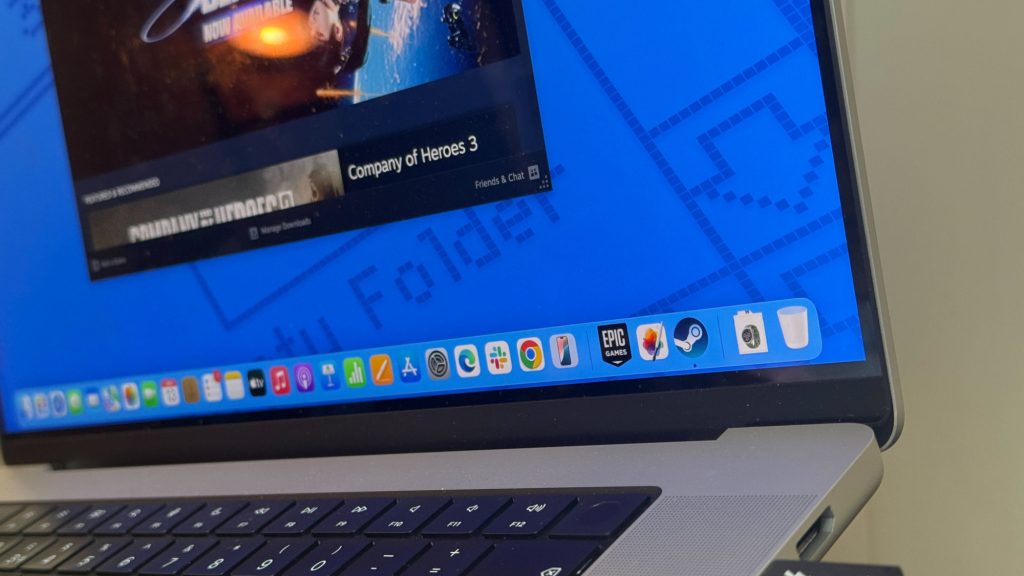In a significant development for macOS gamers, Valve has recently unveiled a Steam Client Beta that operates natively on Apple Silicon. This update marks a pivotal moment for the gaming platform, as it eliminates the need for Rosetta 2, Apple’s translation layer that allowed x86 applications to run on ARM architecture. The introduction of native support is not just a technical upgrade; it represents a strategic pivot in response to the evolving landscape of Apple’s ecosystem. As the company phases out Rosetta 2 with the anticipated macOS 27, the need for a streamlined, native Steam experience is more crucial than ever.
Performance Improvements for Mac Users
The new Steam Client Beta for Apple Silicon aims to enhance performance significantly. By running natively on ARM architecture, both the Steam Client and Steam Helper are expected to deliver better load times, improved frame rates, and less overhead. This transition comes at a time when Apple is solidifying its commitment to its ARM-based chips, following the introduction of the M1 chip five years ago. According to Valve, this update will provide a more seamless gaming experience for macOS users, fostering an environment where gaming can flourish.
As Valve noted on the Steam Community website, the native version is critical for addressing performance bottlenecks. During a recent announcement at WWDC 25, the company confirmed that the coming macOS Tahoe will be the last version of macOS to support Intel-based machines, pushing developers to adapt their applications for Apple Silicon. “The phased-out support for Rosetta 2 is a clear signal that developers need to embrace the future,” said a Valve representative during the event.
Implications for the Gaming Landscape
While this update brings promise, it also highlights the challenges Apple faces in the gaming sector. The compatibility issues with x86 applications remain a significant hurdle, as many popular Windows titles are still not available natively for macOS. Although the new Steam Client allows for better performance, it does not change the fact that users will still require emulation tools to run Windows games on their Apple devices. This limitation could hinder Apple’s efforts to capture a larger market share within the gaming community.
Additionally, Apple’s ecosystem approach aims to create a more inclusive gaming platform, but that strategy is complicated by the relatively smaller library of Mac-compatible games. While the performance upgrades are commendable, many gamers still opt for Windows systems due to the extensive library and lower hardware costs. According to a report by Statista, Windows maintains a commanding lead in the gaming OS market, accounting for over 75% of the global share. The disparity may deter potential switchers, even as Apple Silicon chips prove to be powerful competitors.
How to Access the Steam Client Beta
For users eager to experience the new native Steam Client on their macOS device, the process to upgrade is straightforward. Here’s a step-by-step guide:
- Open the Steam application on your Mac.
- Navigate to the menu bar and select Steam then Preferences…
- In the Steam Settings window, click on Interface.
- Locate the dropdown menu next to Client Beta Participation and select Steam Beta Update.
- Steam will restart and download the updated version (version 1749753892 or higher) that runs natively on Apple Silicon.
- To confirm the upgrade, open the Activity Monitor and check that the Kind column lists Steam as Apple.
Market Response and Future Developments
The market response to Valve’s announcement has been cautiously optimistic. Many users within the gaming community have expressed excitement over the native support, viewing it as a necessary step towards enhancing gaming on Apple devices. “It’s about time Apple and developers invest in the native performance of games,” a noted industry analyst commented. However, until a more extensive library of games becomes available, the complete adoption of macOS among gamers may take time.
Looking ahead, the transition to native applications is likely to encourage other developers to optimize their software for Apple Silicon. As gaming becomes a more critical aspect of Apple’s ecosystem strategy, stakeholders will need to address the existing limitations to improve user experience significantly. The ongoing development of titles and apps specifically designed for macOS will ultimately determine how effectively Apple can captivate the gaming community.
Quick Reference Table
| Item | Description |
|---|---|
| Update Type | Steam Client Beta for Apple Silicon |
| Version Required | 1749753892 or higher |
| Performance Boost | Native support eliminates Rosetta 2 overhead |
| MacOS Transition | macOS Tahoe is the last update for Intel Macs |
| Market Share | Windows holds 75% of the gaming OS market |
In summary, while the introduction of a native Steam Client for Apple Silicon is a significant advancement for macOS gamers, the broader implications for game availability and performance optimization in the gaming ecosystem remain to be seen. Valve’s move signals a commitment to improving the gaming landscape on Apple devices, but lasting success will depend on the collective efforts of developers and the gaming community at large.

